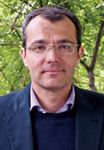Pittcon 2015 Celebrates International Year of Light
Pittcon 2015 (March 8–12, in New Orleans Louisiana), is an associate sponsor of the International Year of Light (IYL). The IYL is a cross-disciplinary educational and outreach project with more than 100 partners from more than 85 countries. It is an initiative of a large consortium of scientific bodies together with UNESCO, and will bring together many different stakeholders including scientific societies and unions, educational institutions, technology platforms, non-profit organizations, and private sector partners.
Pittcon will celebrate the IYL through an interactive “Timeline of Light Technologies,” in the exhibition hall lobby, and with a special session on Tuesday, March 10. In that special session,

Bernhard Lendl of Vienna University of Technology (Vienna, Austria) will preside. Lendl said that he feels honored to be entrusted with the organization of the session. “Vibrational spectroscopy is a very vivid field, bringing up many new and exciting developments,” he said. “I am convinced that those advancements will have a strong impact on the way infrared and Raman spectroscopies are used for performing chemical measurements, not only in dedicated analytical chemical laboratories, but also in the field.”
The selected topics of the symposium are designed to provide an overview of exciting developments. The session begins with a talk by Lendl on mid infrared quantum cascade lasers (QCLs). “Ongoing new technological developments such as mid-IR QCLs are key for advancing IR spectroscopy in many ways,” said Lendl. “The combination of QCLs with atomic force microscopy has just recently allowed performing mid-IR imaging on the nanoscale with impact on fundamental as well as applied research in material science. In process analytical chemistry, QCLs may be considered optimal for developing rugged, portable, and sensitive analyzers for gases and liquids.”
Next in the session, Curtis Marcott of Light Light Solutions will discuss near-field mid-IR imaging in the material sciences, and Rohit Bhargava of the University of Illinois at Urbana-Champaign will present infrared spectroscopic imaging for clinical diagnostic systems. “IR imaging in the far field is on the edge of making a practical difference in the clinical environment,” Lendl said.
Isao Noda of the University of Delaware will discuss two-dimensional correlation spectroscopy study of bioplastics. Referring to Noda’s upcoming presentation, “Two-Dimensional Correlation Spectroscopy Study of Bioplastics,” Lendl said “Complementing the wealth of information contained in vibrational spectra requires clever ways for data analysis, including chemometrics as well as correlation analysis.”
Richard P. Van Duyne of Northwestern University will provide the final presentation with a talk titled “Tip-Enhanced Raman Spectroscopy” which will discuss advances in TERS that illustrate the power of plasmonics. Lendl noted that it is not only hardware developments that will move the frontiers of vibrational spectroscopy. “Especially in Raman, plasmonic nanostructures have had, and will have, a tremendous impact on the sensitivity, speed, and spatial resolution (again in combination with atomic force microscopy) that can be achieved,” he said.
“I am confident that the selected topics and speakers will be of interest to many scientists, both from academic as well as from industry, attending this year’s Pittcon conference,” Lendl concluded.
How Satellite-Based Spectroscopy is Transforming Inland Water Quality Monitoring
Published: April 29th 2025 | Updated: April 29th 2025New research highlights how remote satellite sensing technologies are changing the way scientists monitor inland water quality, offering powerful tools for tracking pollutants, analyzing ecological health, and supporting environmental policies across the globe.
Chinese Researchers Develop Dual-Channel Probe for Biothiol Detection
April 28th 2025Researchers at Qiqihar Medical University have developed a dual-channel fluorescent probe, PYL-NBD, that enables highly sensitive, rapid, and selective detection of biothiols in food, pharmaceuticals, and living organisms.
The fNIRS Glossary Project: A Community-Sourced Glossary of Key Terms
April 28th 2025Established to develop a community-sourced glossary covering key functional near-infrared spectroscopy (fNIRS) terms, including those related to the continuous-wave (CW), frequency-domain (FD), and time-domain (TD) NIRS techniques, the fNIRS Glossary Project features over 300 terms categorized into six key domains: analysis, experimental design, hardware, neuroscience, mathematics, and physics. It also includes abbreviations, symbols, synonyms, references, alternative definitions, and figures where relevant.